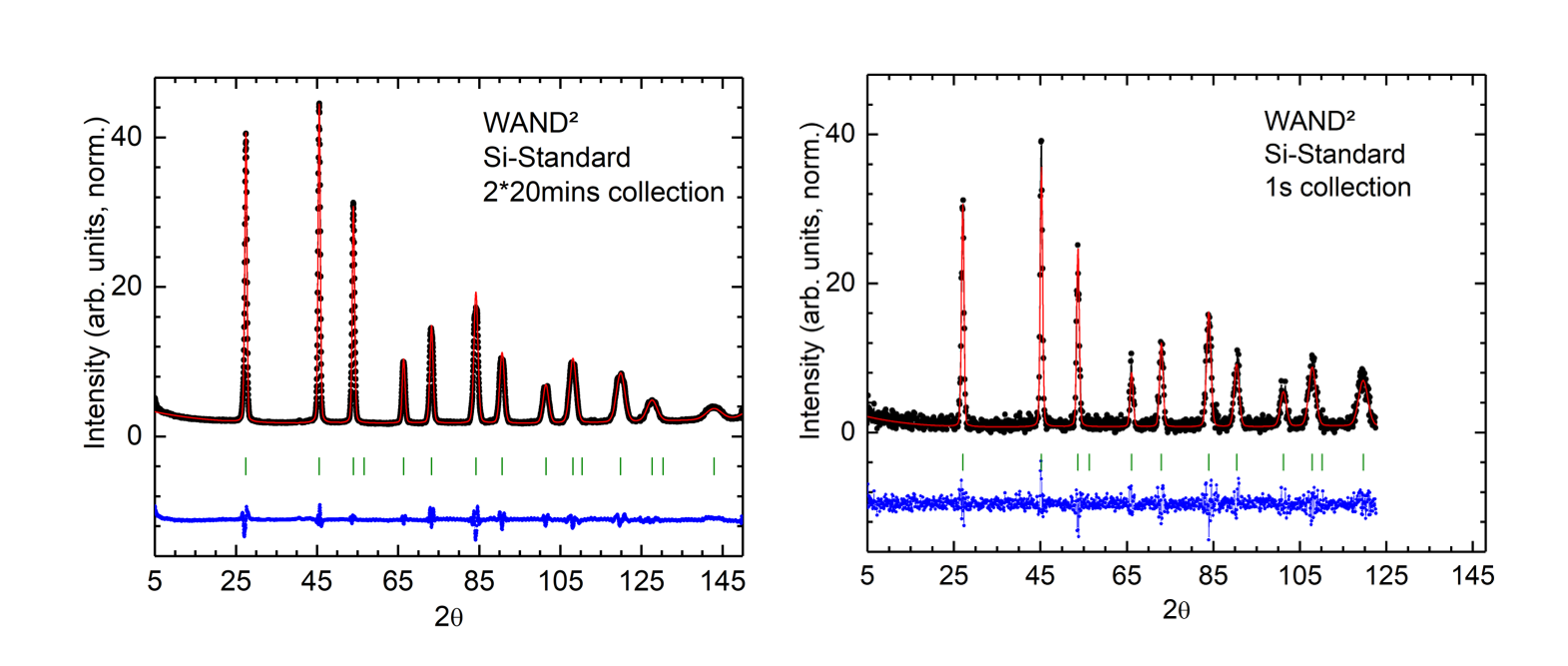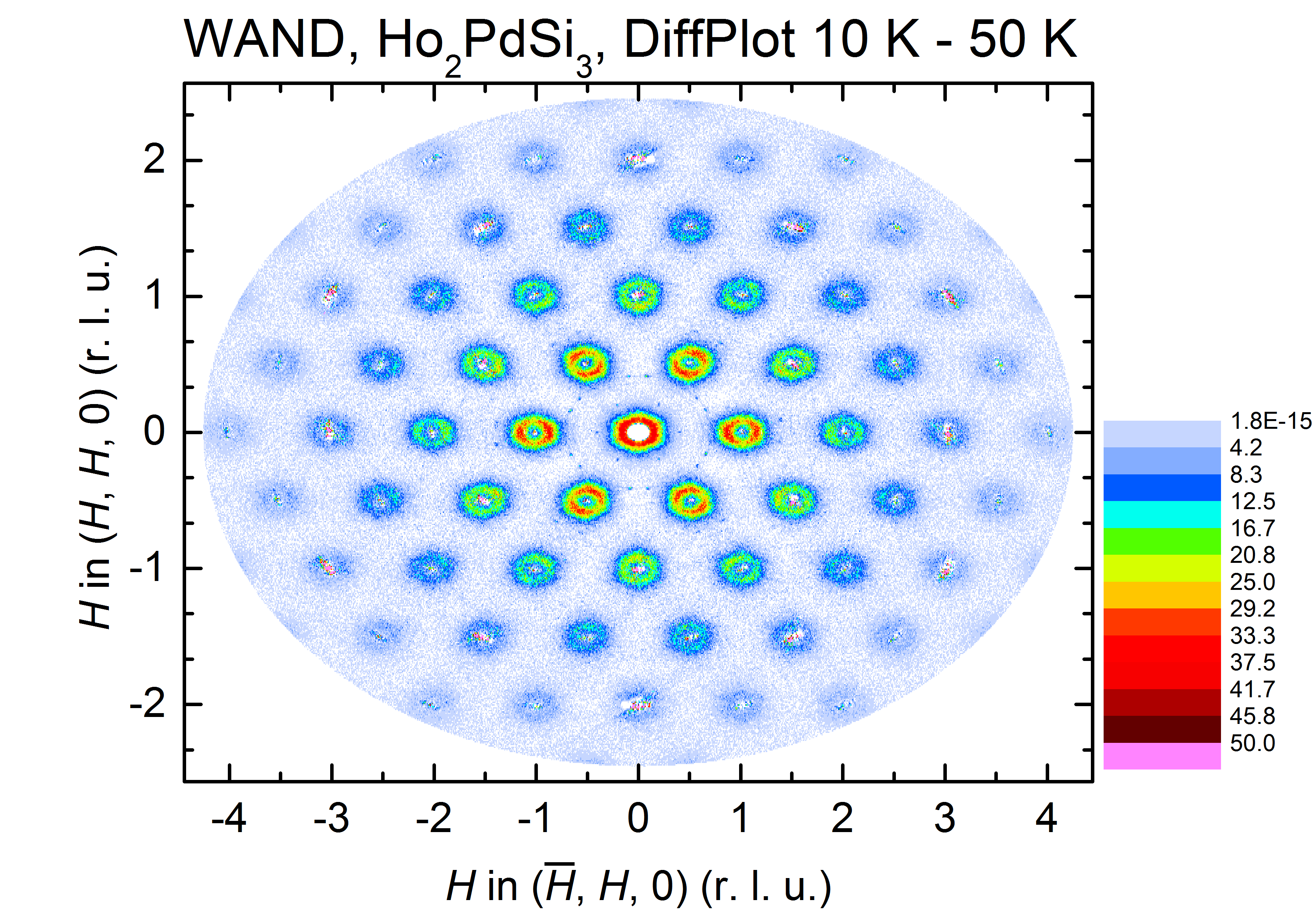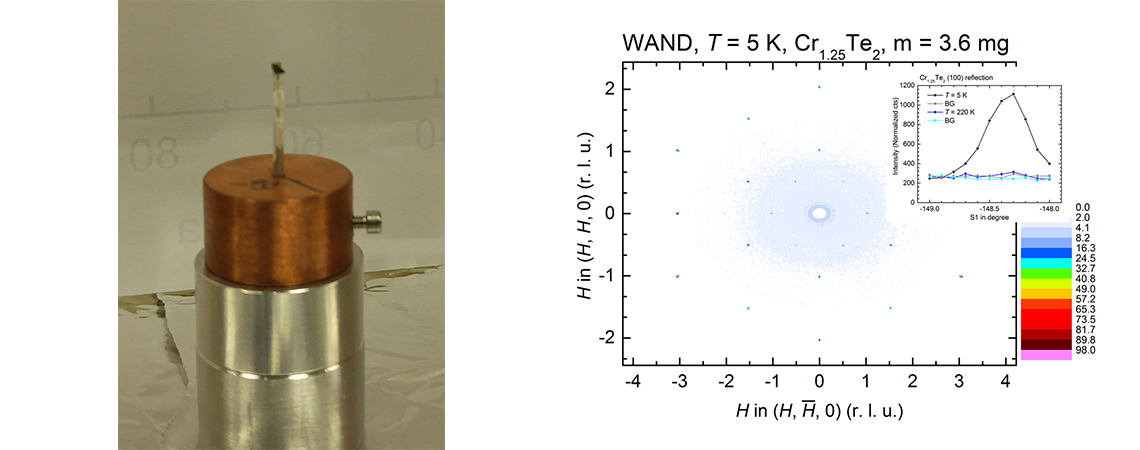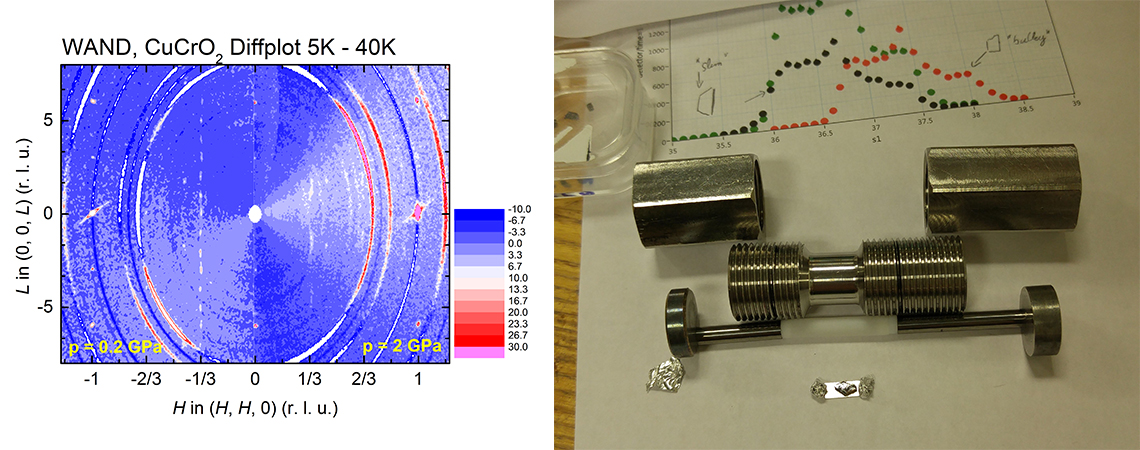Wide-Angle Neutron Diffractometer
WAND² | HB-2C | HFIR
Powder diffraction
Powder diffraction on WAND² can be simulated https://addie.ornl.gov/hfirestimate to inform the user on sample mass and counting time.

Fast acquisition of medium resolution powder diffraction in the Q range 0.2 to 8.2 Å-1. The left picture shows the silicon standard powder pattern for calibration. The pattern is combined from measurements on 2 detector positions each collected for 20mins.
On the right side is the same pattern for one position with a collection time of1s. The high flux and highly efficient detector allow WAND² to take refine able data very fast. This allows measurements with changing parameters, for instance for in-situ synthesis of materials.
Single crystal diffraction – superstructures
WAND² can be used to map the reciprocal space searching for superstructure reflections. In this example the magnetic structure of BaSrCo2Fe11AlO22is revisited. The scattering geometry isHHLplane (left side). The out-of plane coverage of WAND² (±7.5°or +15°) is used to investigate the magnetic Bragg peaks with the propagation vector along c(right side). Measurement time: 30s/sample angle, 180° rotation 0.1° step, m ~ 500mg. (for the original publication see T. Nakajima, Y. Tokunaga, M. Matsuda, S. Dissanayake, J. Fernandez-Baca, K. Kakurai, Y. Taguchi, Y. Tokura, and T. Arima, Phys. Rev. B 94, (2016) 195154).
Single crystal diffraction – diffuse scattering

Reciprocal mapping gives the possibility to investigate short-range correlations for example the reciprocal map of the HK0 plane of Ho2PdSi3. The map is the difference plot 10 K - 50 K which leaves only the strong diffuse critical magnetic scattering around the crystallographic Bragg peak positions (TN= 7K). (20s/sample angle, 180° rotation 0.1° step, m=2.9g; data from the “old” WAND)
Single crystal diffraction – small samples

High Pressure Neutron Diffraction

We try to widen the availability of high pressure cells on WAND². Here, we followed the magnetic structure in the multiferroic CuCrO2using a Ni-Cr-Al pressure cell (photo on the right side, data taken on the “old” WAND). The magnetic Bragg peaks at low pressure are close to (1/3 1/3 L) for integer values of L(left side of the plot). At 2 GPa the peak position remains on (1/3 1/3 L), but Lhas now non-integer value and the reflections broaden considerably along the Ldirection (right side of the plot).



